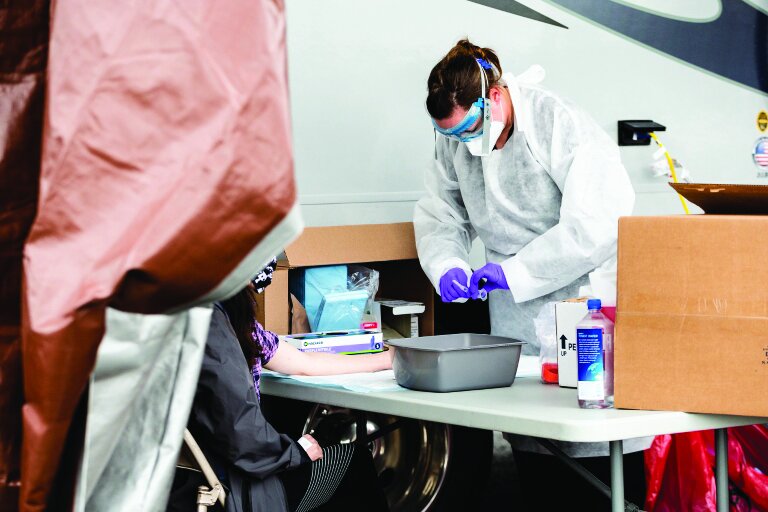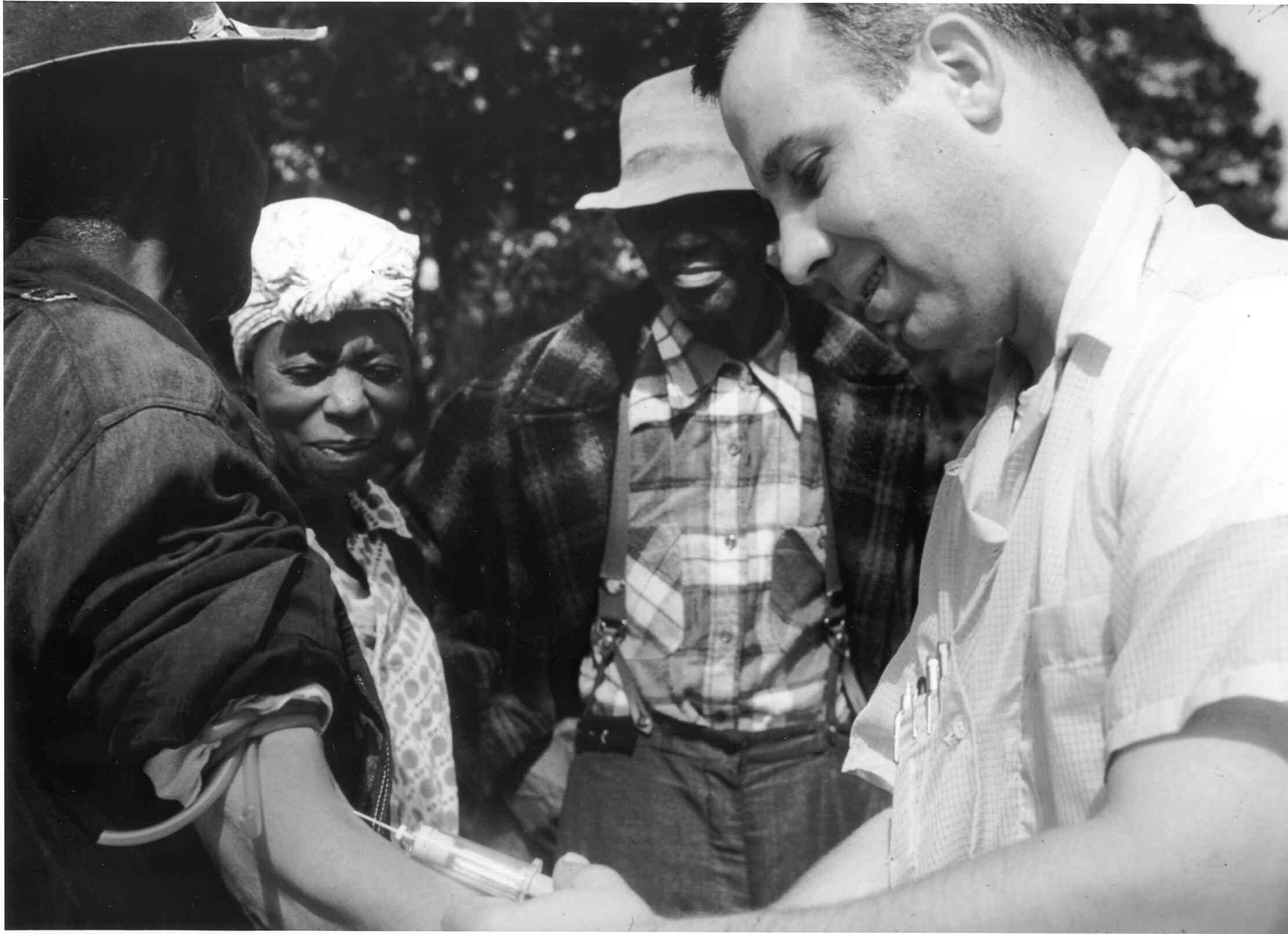A Persistent Fear of Advancing Science With Black Bodies

Commentary
By Sharon Tubbs
Of Fort Wayne Ink Spot
I was excited when the state reached out for help to conduct COVID-19 testing and research in Fort Wayne. Officials asked our agency, HealthVisions Midwest, to arrange the setup. They wanted us to find and secure sites accessible and known to people of color.
Testing options had been limited, especially for those without resources or computer access to make online appointments. This project might be a way of opening the door to more testing on Fort Wayne’s southeast side—and we desperately needed that.
National data had already revealed the virus hit hard among African Americans, infecting and killing us disproportionately. (Research would later show that Allen County ZIP codes with the highest number of positive cases are those where the majority of residents are Blacks and immigrants of color: 46806, 46816 and 46803.)
Medical research can help decrease these lopsided effects. When minority groups participate in research, scientists can analyze differences in how our bodies react to a virus, such as COVID-19.
Yet, we don’t always trust the process, and sometimes for good reason. But more on that later.
For this project, the Indiana State Department of Health and the Richard M. Fairbanks School of Public Health at IUPUI would work together, testing and surveying residents, then using the results for a study to gain insight about COVID-19.
In late May, I contacted representatives for the Fort Wayne Housing Authority and Fort Wayne Urban League. Both lent their support, ultimately offering their properties as testing sites.
When I called Paula Wills, my boss based in East St. Louis, Illinois, she echoed the need for testing and for us to be involved in medical research. Then she asked an important question:
“What are they giving back to the community?”
The question dredged up a tenuous relationship between people of color and professionals in lab coats. In the past, “research” for Blacks has often meant professionals get to take our blood, our cells, our data and then run, never to be heard from again. They use it to write scholarly articles, give presentations at conventions of experts and acquire kudos from colleagues.
We had to ask ourselves: Is this research truly a united effort for the common good?
Think of the Tuskegee Experiment, in which doctors allowed impoverished Black men to die of syphilis, until a reporter exposed the practice in the early 1970s. By 1947, researchers knew penicillin could cure the disease, but they didn’t tell the men participating in the Tuskegee experiment. Rather than save the men’s lives, researchers chose to keep studying the disease’s effects as it ravaged through their bodies.
Consider that racist doctors and legislators supported the eugenics movement. For decades during the 20th century, they sterilized poor people, criminals and the mentally ill—but mostly black women. The women showed up for surgeries, expecting doctors to correct a medical issue. Only later did they realize they’d been given hysterectomies.
And what about Henrietta Lacks, the 31-year-old Black woman who died of cervical cancer? Researchers collected cells during her treatment, then studied and multiplied them. Lacks died in 1951, but her line of cells lived on, contributing to medical breakthroughs, including the polio vaccine, AIDS, cancer, leukemia and even the effects of zero gravity in outer space, according to Johns Hopkins Medicine. The problem? Neither Lacks nor her descendants knew about it. Nobody told them.
Locally, a misunderstanding brought the research dilemma to the forefront. To maintain the integrity of the research project, the university planned to test only a limited number of randomly selected people. It wouldn’t be the general drive-up testing to benefit hundreds we envisioned.
What happened next was a matter of principle. The local organizations declined to move forward. HealthVisions sent a letter to state officials, expressing our view and the history of distrust between African Americans and medical researchers. Thankfully, state officials heard us. They worked with the researchers and scurried to offer a day for general drive-up testing. HealthVisions, the Housing Authority and the Urban League pulled together to promote the event.
On June 8, cars snaked through the Urban League parking lot. Many of those tested were people of color. Interpreters stood by to help non-English speakers. In the end, workers tested 365 people in 10 hours. The volume spoke to the need for easily accessible testing, and results later fed into researchers’ broader local findings. In southeast ZIP codes, people were in some instances seven times as likely to test positive when compared to ZIP codes with predominantly white residents.
Today, the pandemic continues its forage through communities of color, and research will be crucial to medical solutions. But collaboration and mutual benefits are key. This experience turned out to be an example of agencies working together for a greater good.
Tony Gillespie, with the Indiana Minority Health Coalition, summed it up well: “We want them to do research with us, not (just) research on us.”
Sharon Tubbs is director of HealthVisions Midwest of Fort Wayne and a contributing writer for Fort Wayne Ink Spot.


